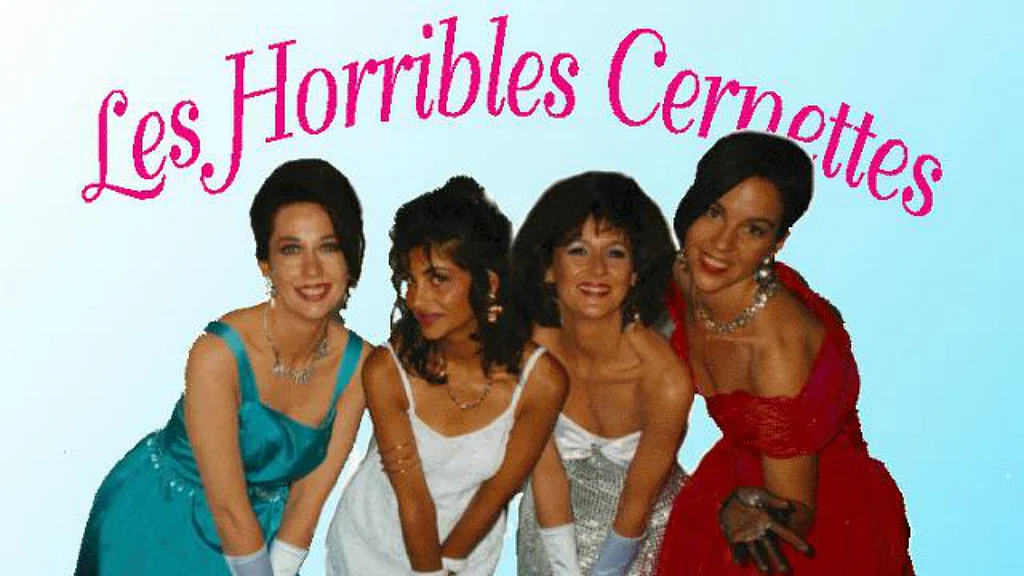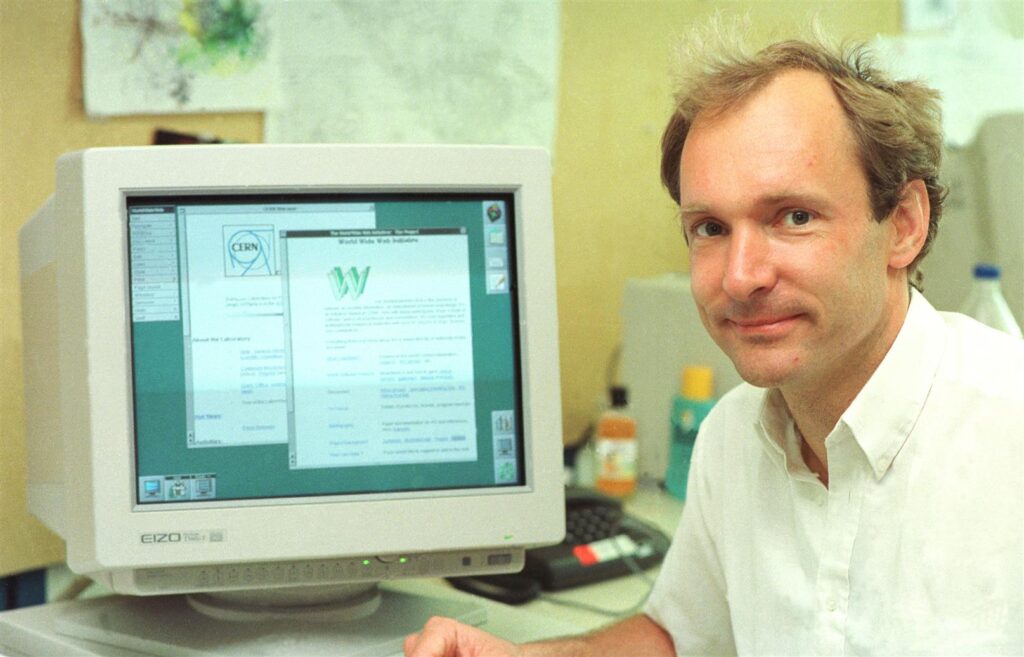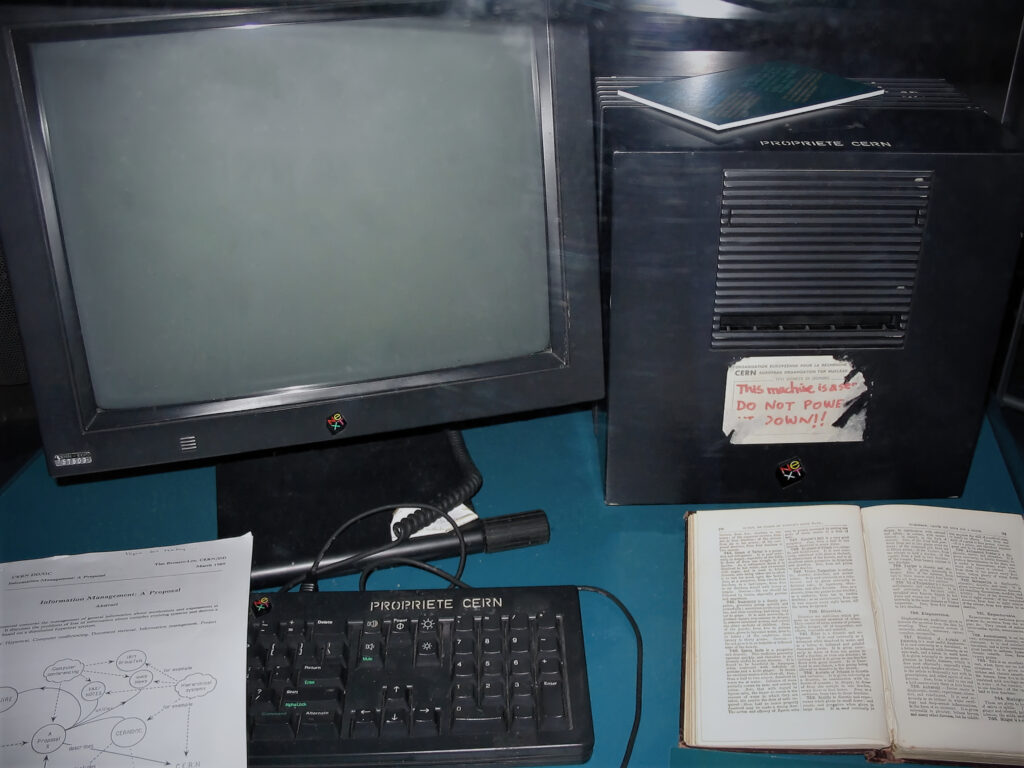Introduction – A Journey Back to the Early Internet
Before social media, memes, or even Google existed, the internet was a quiet network connecting a handful of researchers and universities. It was the early 1990s, and the digital world was still in its infancy. Most people didn’t even know what the internet was, let alone imagine it as a place where billions of photos would one day be shared. But even in those early days, something remarkable happened—the first photo on internet was uploaded, marking the beginning of a visual revolution.
This wasn’t a high-definition image or a dramatic news photo. Instead, it was a quirky, humorous snapshot of a pop band made up of CERN employees called “Les Horribles Cernettes.” While the image itself might seem ordinary today, its upload was a historic moment that opened the doors to what we now take for granted—sharing visuals online.
Understanding the story behind the first photo on internet helps us appreciate how far digital media has come. From a simple, pixelated image to today’s 4K streaming and AI-generated visuals, the internet’s journey has been extraordinary. This image wasn’t just a test upload; it became a symbol of how creativity, technology, and curiosity collided at a time when the online world was just beginning.
As we dive deeper into this fascinating story, you’ll discover how one photo quietly changed the way we use the internet forever.
What Was the First Photo Ever Uploaded Online?

The first photo ever uploaded to the internet wasn’t a historical event, a scientific diagram, or a political figure. Surprisingly, it was a lighthearted image of a parody pop band called Les Horribles Cernettes—four women dressed in retro outfits, striking a playful pose. The photo was uploaded in 1992 by Silvano de Gennaro, an IT developer at CERN, the European Organization for Nuclear Research. He took the photo during a backstage moment and edited it on a Mac using early versions of Photoshop.
At first glance, the image might seem random. But this was no accident—it was uploaded as part of a test for a revolutionary new system being developed by Tim Berners-Lee: the World Wide Web. Berners-Lee needed to check if multimedia files like images could be shared through the web, which until then was limited to plain text. That single quirky image became the first step in transforming the internet from a text-only space into a rich, visual experience.
The importance of the first photo on internet lies not in what it shows, but in what it made possible. It opened the path for digital storytelling, memes, photo blogs, image search, and the endless visual content we consume daily. What began as a fun backstage snapshot at a science institute ended up being a historical turning point in web history.
Today, this image remains a reminder that even the smallest uploads can spark major shifts in how we communicate online. It’s hard to believe, but that simple JPEG of four singing scientists was the beginning of the visual web as we know it.
Who Uploaded It and Why?
The first photo on internet was uploaded by Silvano de Gennaro, an IT engineer and music enthusiast working at CERN, the European research center famous for its role in physics and technology innovation. In 1992, Silvano wasn’t trying to make internet history. He was simply helping out with a fun side project involving a parody pop band formed by CERN employees, known as Les Horribles Cernettes.
Silvano had taken a photo of the band backstage using an early digital camera and later edited it on his Macintosh computer. Around the same time, Tim Berners-Lee, the inventor of the World Wide Web, was working on testing whether images could be served over the web through a browser. Until then, the internet was purely text-based and lacked the visual dimension we now take for granted.
When Tim needed a sample image to demonstrate this new capability, Silvano offered the edited band photo. It was a perfect test case—small, lighthearted, and available. And so, the first photo on internet was uploaded not as part of a major plan, but as a quick solution to test a brand-new technology.
The reason behind this upload was simple but powerful: to test the ability of the internet to handle images alongside text. This one experiment ended up changing how we experience the web today. From photo sharing platforms to visual news content, everything traces back to that moment when a band photo became a digital landmark.
In hindsight, Silvano and Tim weren’t just running a test—they were unknowingly shaping the future of online communication, one pixel at a time.
The Story Behind ‘Les Horribles Cernettes’

Long before the internet became a place for viral music and digital entertainment, a group of CERN employees created something both hilarious and historic. Les Horribles Cernettes—which translates to The Horrible CERN Girls—was a parody pop band formed in the early 1990s by women working at or connected to CERN, the European Organization for Nuclear Research. The band was born out of boredom, wit, and a love for science-themed humor.
The group was the brainchild of Silvano de Gennaro, who was both an IT developer and music lover. He composed songs for the band that parodied popular styles of the time but with lyrics focused on high-energy physics, particle collisions, and life at CERN. With members donning vintage 1960s outfits and performing geeky, tongue-in-cheek songs, Les Horribles Cernettes quickly became a hit at CERN’s internal events and conferences.
What made them truly iconic wasn’t just their music, but a single photo taken backstage before one of their performances. This casual, playful image—showing the band members in costume, striking a classic pop pose—ended up being the first photo on internet. It was chosen not for fame, but simply because it was available and fun, making it ideal for a technical demonstration of the web’s image-handling capabilities. Wikipedia page on Les Horribles Cernettes.
Their story is a perfect example of how humor, creativity, and technology can collide to create something historic. Les Horribles Cernettes never aimed to become internet legends, yet their snapshot marked the beginning of a visual era online. Today, they are remembered not just for their quirky songs, but for being unexpectedly immortalized in digital history.
Why This Photo Was So Historic
At first glance, the first photo on internet doesn’t look like anything groundbreaking. It’s just four women in vintage outfits posing for a light-hearted shot. But what makes this image historic isn’t how it looks—it’s what it represents. This simple photo of Les Horribles Cernettes became the first image ever uploaded to the World Wide Web, marking a major turning point in how we would use the internet forever.
Before this moment, the web was a text-only platform. There were no images, no videos, no interactive visuals—just plain code and content. By successfully uploading and displaying this photo on a webpage in 1992, the team at CERN proved that the internet could become a visual medium. It was a silent revolution, one that opened the door for everything we now associate with online life—from memes and photo galleries to social media and video streaming.
The historic nature of the first photo on internet lies in the shift it triggered. It showed that the web could evolve from a static, informational space into a creative and expressive platform. The moment that image appeared in a browser, it wasn’t just a technical success—it was the start of a new digital culture where visuals would speak louder than words.
Today, we scroll through thousands of images daily without a second thought. But it all began with one quirky photo, uploaded not for fame or fortune, but as a simple test. That test turned into a defining moment in internet history, proving that sometimes, the smallest uploads have the biggest impact.
How It Was Uploaded – The Technology of 1992

Uploading a photo to the internet in 1992 was nothing like the drag-and-drop simplicity we enjoy today. The process was complex, slow, and only a handful of people in the world even knew how to do it. Yet, that’s exactly what makes the story behind the first photo on internet so fascinating. It wasn’t just about the image—it was about proving that the web could evolve beyond plain text.
The photo of Les Horribles Cernettes was taken using an early digital camera and later edited on a Macintosh computer using Photoshop 1.0—one of the earliest versions of the now-iconic image editing software. Once edited, the photo was saved in the .GIF or .JPEG format, which were among the few image file types that could be displayed in browsers being developed at the time.
The actual upload was carried out on a NeXT computer, the same kind of machine Tim Berners-Lee used to build the first web browser and web server. He and his team at CERN were experimenting with a new concept—embedding images in HTML so that webpages could include more than just text. With limited bandwidth and basic tools, they placed the image file on a CERN web server and created an HTML page that linked to it.
When the image successfully loaded in the browser, it was a quiet but monumental success. For the first time, the web had a visual element. That moment proved that multimedia could be part of the internet, setting the foundation for how we experience the web today.
Back then, no one realized how big that single step would become. But from that clunky, coded process in 1992, the first photo on internet quietly launched a visual revolution.
What Happened After – The Impact on Digital Media
After the upload of the first photo on internet in 1992, things didn’t change overnight—but the foundation had been laid for a visual transformation of the web. What started as a simple test at CERN quickly became a turning point in digital communication. That single image showed developers and scientists that the web could be more than just a platform for exchanging research papers or plain text—it could support rich media that would make online experiences more engaging and human.
Within a few years, web browsers began supporting inline images more efficiently. Websites started to evolve from dull, text-heavy pages to colorful, interactive platforms. Digital photography, image-sharing tools, and eventually social media platforms all followed in the footsteps of this early experiment. The concept of uploading photos became a core part of online culture.
The first photo on internet proved that the web could be a canvas, not just a document. It paved the way for innovations in online advertising, graphic design, digital journalism, and visual storytelling. By the late 1990s and early 2000s, platforms like Flickr, Photobucket, and later Facebook and Instagram, built their identities around sharing photos online—something that would not have been possible without that early test at CERN.
In essence, this quirky image didn’t just upload pixels; it uploaded possibility. It gave rise to an era where photos could be shared instantly, memories could be captured globally, and digital media could connect people in ways text never could. The impact of that one moment in 1992 is still visible every time we scroll, swipe, and share online. The web was never the same again—and it all began with the first photo on internet.
Where You Can Still See This Photo Today
Even after more than three decades, the first photo on internet hasn’t been lost to time. In fact, it’s still accessible online and preserved as a digital piece of history. If you’re curious to see the image that quietly sparked the visual evolution of the internet, you can easily find it through a simple search for “Les Horribles Cernettes first internet photo.” Several websites and archives continue to host and celebrate this iconic image.
One of the most reliable places to view the photo is through CERN’s official website and web history pages. CERN has kept a record of its early contributions to the World Wide Web, and the photo of Les Horribles Cernettes remains a featured piece of that legacy. You can also find the image archived in tech history articles, web museums, and digital heritage collections.
The photo often appears in blogs, documentaries, and videos exploring the history of the internet. It has been referenced in interviews with Tim Berners-Lee and Silvano de Gennaro, and it even pops up in university lectures and web design courses as an example of how far the internet has come. It’s a part of internet culture now—shared not just for its content, but for its historical significance.
What makes the first photo on internet so special is that it’s still viewable by anyone, anywhere. That accessibility is a reminder of what the web was designed to be: open, universal, and permanent. So whether you’re a tech enthusiast, a student, or just curious, this humble image from 1992 is still out there—waiting to be rediscovered by the next generation of internet users.
Interesting Facts You Probably Didn’t Know

The first photo on internet might seem simple, but it’s surrounded by fascinating details that most people have never heard. Here are some surprising and lesser-known facts that make this quirky image even more memorable in digital history.
- The Band Was a Joke That Went Viral Before “Viral” Existed
Les Horribles Cernettes was created just for fun by CERN employees. Their songs were full of physics puns and inside jokes. Little did they know their photo would become an internet milestone. - It Was Edited Using Photoshop 1.0
The photo was touched up on an early Macintosh computer using one of the very first versions of Adobe Photoshop. That makes it not only the first photo on the web, but one of the first digitally edited images ever shared online. - Tim Berners-Lee Approved the Upload Personally
The father of the World Wide Web, Tim Berners-Lee, was directly involved in the decision to upload the photo. He wanted to test if the web could display images—a feature that would later define how we experience content online. - The Upload Wasn’t Seen as Historic at the Time
Back in 1992, no one realized they were making history. It was just a technical experiment. The photo only gained legendary status years later as web historians started tracing the roots of multimedia on the internet. - It Still Exists in Its Original Location
Incredibly, the photo can still be found on CERN’s servers, where it was first uploaded. That’s a rare feat in today’s fast-changing digital world where links break and content disappears. - The Band Got Back Together After Going Viral Again
Years later, after people rediscovered the photo’s history, Les Horribles Cernettes reunited for performances and interviews, finally getting the global attention they never expected.
These facts prove that sometimes, the most unforgettable pieces of the internet’s history come from the most unexpected places.
Conclusion – A Picture That Changed the Internet Forever

In the grand timeline of internet history, the first photo ever uploaded might seem like a small moment—but its impact was massive. That casual image of Les Horribles Cernettes, taken backstage at CERN and uploaded in 1992, quietly marked the beginning of a visual era online. What started as a technical test became a symbolic milestone, proving that the web could be more than just text—it could also tell stories through images.
This single photo opened the door to everything we now associate with modern internet culture: photo sharing, memes, social media, digital journalism, and creative expression. Without it, the internet might have evolved much more slowly into the visual space we navigate every day.
The beauty of the first photo on internet lies not in its composition or quality, but in what it represented—a shift in how we communicate, connect, and create online. It wasn’t planned, promoted, or polished. It was spontaneous, humorous, and human. And that’s exactly what makes it timeless.
As we scroll through image-packed feeds and swipe past hundreds of pictures each day, it’s worth remembering the humble beginning that made it all possible. One simple image. One bold experiment. One quiet revolution.
The first photo on internet may have faded into the background of our fast-moving digital world, but its legacy continues every time someone clicks “upload.”
Also Read: 12 Proven Ways to Make Your Phone Faster Instantly
FAQs – First Photo On Internet Explained
Q1. What was the first photo ever uploaded to the internet?
The first photo ever uploaded to the internet was of a parody pop band called Les Horribles Cernettes, made up of CERN employees. The image shows four women in vintage-style costumes posing for a playful photo backstage.
Q2. Who uploaded the internet’s first photo?
Silvano de Gennaro, an IT engineer at CERN, uploaded the photo in 1992. He had taken and edited the image, which was then used by Tim Berners-Lee to test image sharing on the World Wide Web.
Q3. Why was this photo uploaded?
The photo was uploaded as part of an experiment to test whether images could be displayed on the web. Until then, the internet was mostly text-based. This upload marked a shift toward multimedia content online.
Q4. What technology was used to upload the photo?
The image was edited using Photoshop 1.0 on a Macintosh computer and uploaded via a NeXT computer, which was used to host the early CERN web server. It was one of the first demonstrations of inline images on a webpage.
Q5. Is the original photo still available online?
Yes, the original photo is still viewable on various historical archives and even on CERN’s official website. It’s widely shared in articles, documentaries, and web history blogs.
Q6. Why is this photo considered important?
This simple image proved that the internet could handle visual content. It paved the way for digital photography, social media, image sharing, and multimedia communication as we know it today.
Q7. Did the band Les Horribles Cernettes become famous after the photo?
While the band started as a fun side project, they became internet legends years later due to their unexpected role in web history. They even reunited for performances after their photo gained global attention.
